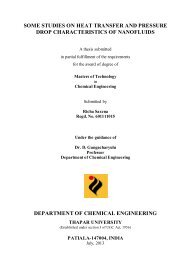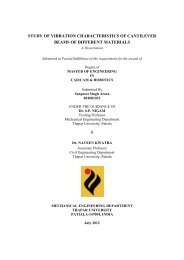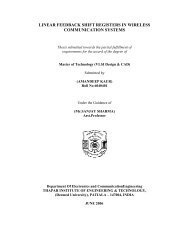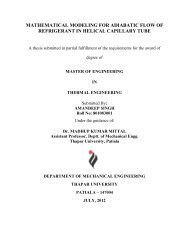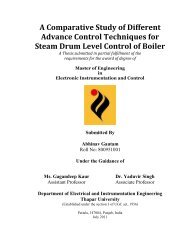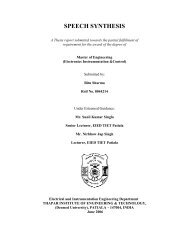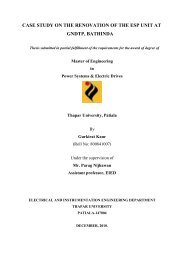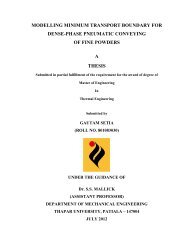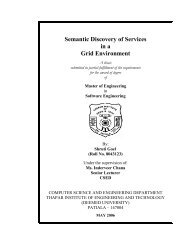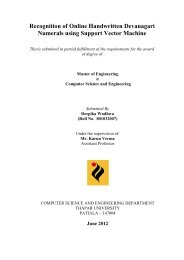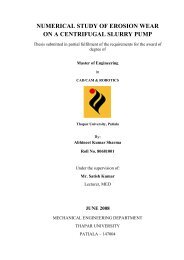from indigenous fermented foods and human gut ... - Thapar University
from indigenous fermented foods and human gut ... - Thapar University
from indigenous fermented foods and human gut ... - Thapar University
Create successful ePaper yourself
Turn your PDF publications into a flip-book with our unique Google optimized e-Paper software.
136<br />
Chapter V Discussion<br />
gave maximum activity of 2844 AU/ml at 18 h, before <strong>and</strong> after which a less activity was<br />
observed. Maximum bacteriocin production occurred in exponential growth phase in the case<br />
of Lactobacillus casei (LAM-1) as was typical for bacteriocin production by most of LAB<br />
(De Vuyst <strong>and</strong> V<strong>and</strong>amme 1994) therefore, displayed secondary metabolite kinetics.<br />
Decreasing bacteriocin activity after 20 h incubation may be explained by bacteriocin<br />
degradation due to culture proteases, or low culture pH (Parente <strong>and</strong> Hill, 1992; Torri Tarelli<br />
et al., 1994). In addition, re-adsorption of bacteriocin to the producer cell surface at low pH<br />
may contribute to the decrease in the observed bacteriocin in culture medium.<br />
Maximum activity was also observed at 35°C, while 25 <strong>and</strong> 45°C did not supported<br />
bacteriocin production. Criado et al. (2006) concluded <strong>from</strong> their study that temperature has a<br />
strong influence on bacteriocin production by their strain <strong>and</strong> maximal bacteriocin activity<br />
was observed at 35°C, whereas, Shin et al. (2008) reported 37°C <strong>and</strong> pH 5-7 as optimum for<br />
the bacteriocin production <strong>from</strong> Pediococcus pentosaceus K23-2. Hu et al., (2008) reported<br />
enterocin <strong>from</strong> Enterococcus duran over a temperature range 20-43°C.<br />
The bacteriocin activity of L. casei LAM-1 in prolonged fermentation dramatically<br />
decreased <strong>from</strong> 28-36 h. Similar pattern had been observed for other LAB bacteriocins<br />
(Aasen et al., 2000; Mataragas et al., 2003). For L. casei LAM-1, optimum activities were<br />
observed between pH 6 <strong>and</strong> 7 after 18 h. Effect of pH on the bacteriocin production by the<br />
selected strains in the present study suggests no growth <strong>and</strong> production at pH 3.0, although<br />
growth was observed at pH 4.0 <strong>and</strong> 5.0, but no bacteriocin was produced within the 4 h<br />
incubation period. According to Van de Berghe et al. (2006) bacteriocin production<br />
demonstrated primary metabolite kinetics but was limited to the early growth phase. These<br />
observations may be explained by critical biomass for switching off bacteriocin production



